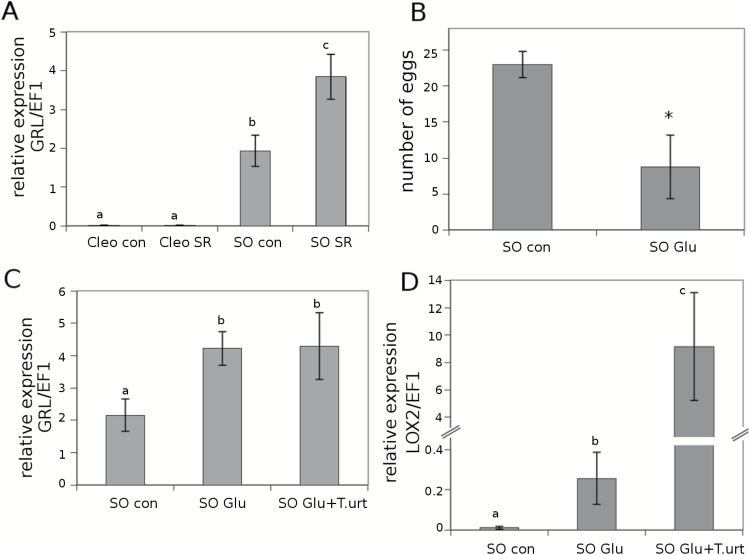Fig. 4.
Relevance of Glu and glutamate receptor-like genes (GRL) in SR against T. urticae in citrus rootstocks. Cleopatra mandarin (Cleo) and sour orange (SO) plants were previously infested with 10 T. urticae adult females (SR). (A) Three days later, distal uninfested leaves of control and SR plants were collected for RT-PCR analysis. Data are presented as a mean of three independent analyses of transcript expression relative to the housekeeping gene plants ± SD (n = 3). Different letters indicate significant differences (one-way ANOVA, P < 0.05; LSD) between treatments with Ct values as described by Yuan et al. (2006). (B) Spider mite oviposition in sour orange plants treated with 100mM of Glu (SO Glu) compared with control plants (SO con). Three days after Glu treatment, the plants were infested with 2-day-old T. urticae adult females. Three days later, the number of eggs was assessed. The asterisk indicates a significant difference between different treatments (t-test; P < 0.05). (C) GRL and (D) LOX2 expression levels in sour orange plants treated with 100mM of Glu (SO Glu). Three days later, the plants were infested with 2-day-old T. urticae adult females and 3 days after that the leaves were collected for RT-PCR analysis. Data are presented as a mean of three independent analyses of transcript expression relative to the housekeeping gene plants ± SD (n = 3). Different letters indicate significant differences (one-way ANOVA, P < 0.05; LSD) between treatments with Ct values as described by Yuan et al. (2006).

